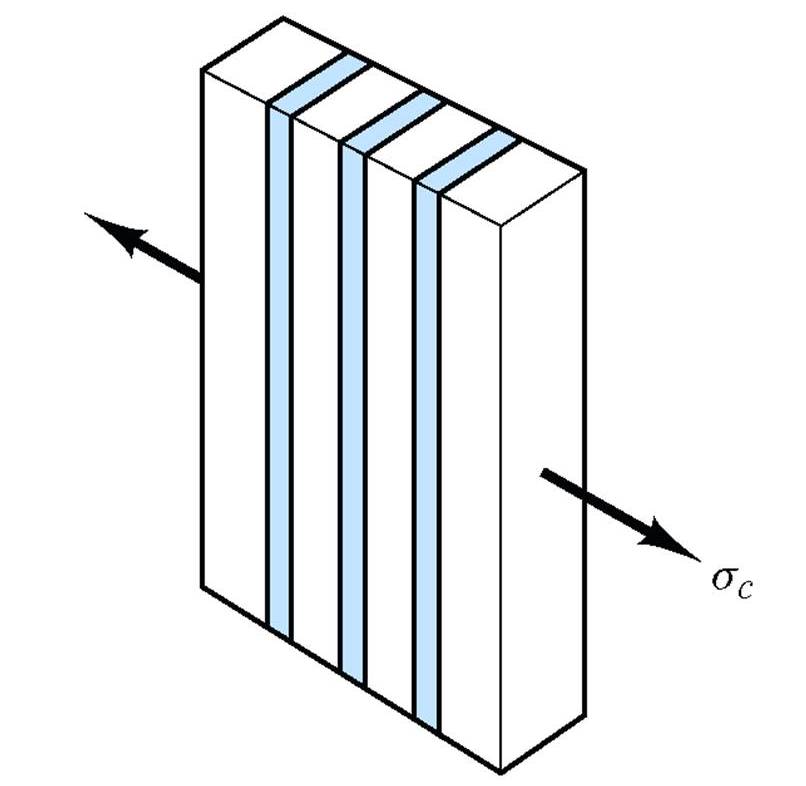Property Averaging for the Case of Isostress
Calculating Young's Modulus for a Composite Material Under Isostress
Now we
will look at the specific case of calculating the modulus of elasticity
for transverse loading of a composite material with continuous aligned
fibers, i.e. the load is perpendicular to the alignment of the fibers.
This specific case is called isostress since the stress in the fibers and the matrix is the same:
sc = sm = sf = s

The total elongation of the composite is the sum of the elongation of the fibers plus the elongation of the matrix:
deltaLc = deltaLm + deltaLf
Divide this equation by Lc :
deltaLc/Lc = deltaLm/Lc + deltaLc /Lc
Note:
Lm = (Lct Lm) / (Lct)
Lm = Lc (tLm /tLc)
Lm = LcVm
Solving this for Lc gives:
Lc = Lm/Vm
Similarily we can get:
Lc = Lf/Vf
Substituting into the above equation with these expressions for Lc gives:
deltaLc/Lc = Vm (deltaLm/Lm) + Vf (deltaLf /Lf)
ec = Vm em + Vf ef
Substituting for the strain, e, using the stress (e = s/E):
(sc/Ec) = Vm (sm/Em) + Vf (sf/Ef)
And since sc = sm = sf = s, we have finally:
Ec-1 = Vm Em-1 + VfEf-1
Calculating Other Properties for a Composite Material Under Isostress
Although this derivation was for Young's modulus, this relationship holds for many properties.
In general for isostress conditions:
Xc-1 = Vm Xm-1 + VfXf-1
where X is:
- E, Young’s modulus
- D, diffusivity
- k, thermal conductivity
- sigma, electrical conductivity
- nu, poisson’s ratio

